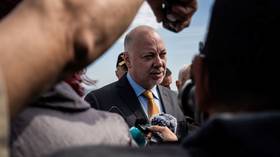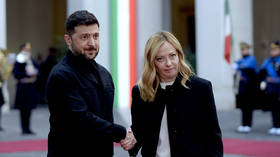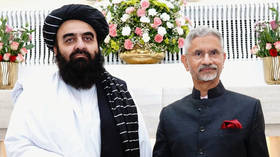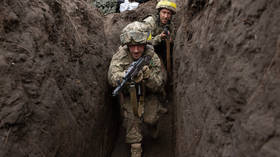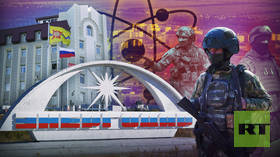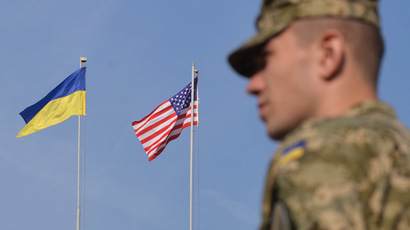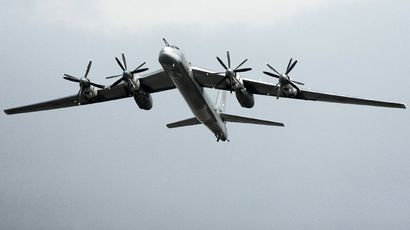Long-range air patrols put Russian strategic bombers near Guam
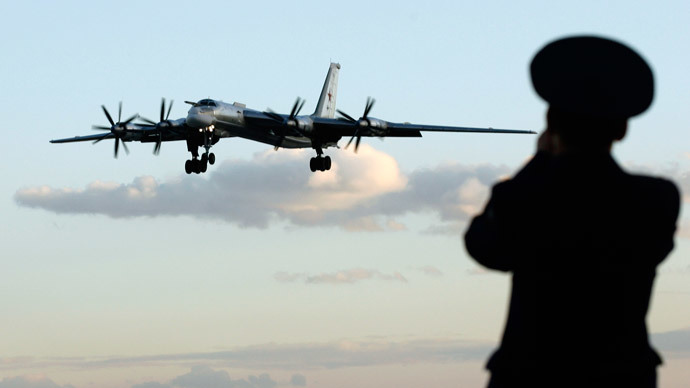
Two Russian strategic bombers flew near the US territory of Guam last week shortly after Russia’s defense minister announced flight patrols of the nation’s long-range nuclear-capable aircraft over international airspace near North America.
Two Russian strategic bombers flew near the US territory of Guam last week shortly after Russia’s defense minister announced flight patrols of the nation’s long-range nuclear-capable aircraft over international airspace near North America.
“US Pacific Command can confirm that two aircraft circumnavigated Guam on November 13th,” said spokesman Maj. Christian Devine, according to the Washington Free Beacon. “The aircraft were flying safely in international airspace and in accordance with international norms; as such, the decision was made to not intercept them.”
The bombers were identified as Tu-95 Bear H aircraft, which flew near a major American military outpost in Guam.
On Nov. 12, two days before the Guam flights, Russian Defense Minister Sergei Shoigu announced impending long-range flight patrols that would include the Gulf of Mexico.
"In the current situation, we need to secure our military presence in the western part of the Atlantic, eastern part of the Pacific oceans and the waters of the Caribbean and Gulf of Mexico," he told Itar Tass.
Shoigu added that the flights were “connected to the situation in Ukraine, with the emerging anti-Russia inclinations on the part of NATO and the increasing foreign military presence in the immediate vicinity of our borders.”
The Pentagon responded saying Russia, like other nations, has the right to be in international airspace and international waters.
"The Russians have patrolled in the Gulf (of Mexico) in the past, and we’ve seen the Russian Navy operate in the Gulf of Mexico. These are international waters," said Pentagon spokesman Colonel Steve Warren, according to Reuters.
"It’s important that the Russians conduct their operations safely and in accordance with international standards."
Russia previously ran flights near Guam on Feb. 12, 2013, according to the Free Beacon, before being intercepted by American F-15 jets.
The latest Guam flights coincided with the G-20 summit in Australia, where the Western-Russian conflict over Ukraine was a topic of discussion among the 20 major economies. Western-backed elements in Ukraine fomented a government transition earlier this year, deposing President Viktor Yanukovich. A tentative ceasefire is in place between the two sides distinguished by loyalty to the new government in Kiev or self-proclaimed Donetsk and Lugansk Peoples republics in the east.
In September, Admiral Samuel Locklear, chief of the US military’s Pacific Command, spoke cautiously a week after Russian Bear bombers approached US and Canadian airspace. Both countries scrambled fighter jets to intercept the Russian craft, Reuters reported.
"Certainly the return of the long-range aircraft flights that we haven't seen in any significant number over the last decade or so is concerning. And it's something that we watch very carefully," Locklear said.
Locklear added that Russian approaches near the US air defense identification zone - an area just outside sovereign US airspace - was "basically kind of Cold War activity with long-range bombers."
"These are things that we have to be concerned about as military people. We have to think about them and what that would mean to the security of the region and the security of our own homeland."
Yet Locklear did not mention reciprocal military training exercises conducted by the US and allies on Russia’s doorstep, in Ukraine. A total of 1,300 troops from 15 nations, either active NATO members or candidate-countries, participated in drills known as ‘Rapid Trident,’ which also took place in September.
Meanwhile, eight northern European nations recently agreed to step up military training and data sharing to oppose an alleged "invasion" of airspace by Russia. Moscow has increased its air patrols near Europe after NATO beefed up its own European presence in the wake of the Ukraine crisis.
The agreement for closer cooperation between Nordic and Baltic countries and Britain came last week.
"NATO has recorded over 100 intercepts so far this year, three times as many as in 2013 and the year is not yet finished," British Defense Secretary Michael Fallon said. "We will not allow Russia to continue to invade our airspace."


